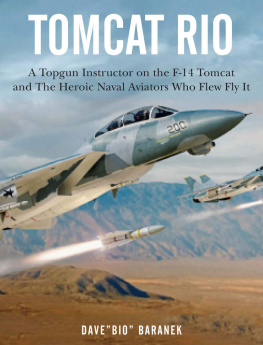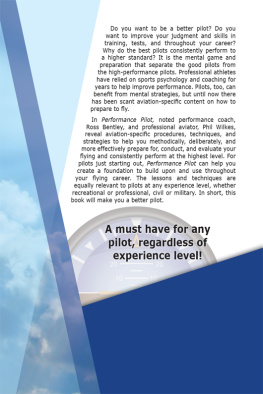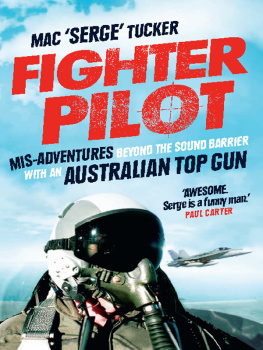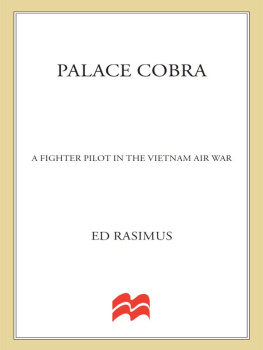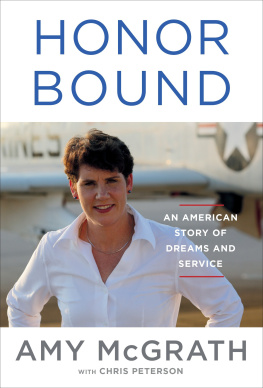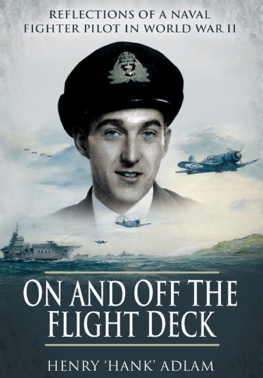Many may dream of one day wearing Navy Wings of Gold, but few truly appreciate what is required to earn those Wings and move from the street to the Fleet. In this book, Bio shows how he climbed from college student to experienced naval flight officer. Aircraft have changed, but that process continues on. Heres a great read for any aviation enthusiast, and especially for anyone considering a career in Naval Aviation.
Vice Admiral Streak Chanik, USN (Ret.), former F-14 pilot and Topgun instructor
I couldnt put Dave Baraneks book downhe put me right in the cockpit of his aircraft and made me feel like I was a Navy RIO running intercepts on bad guys. Dave wanted to be a pilot; so did I, but our eyesight wasnt quite good enough, so we both chose to become backseaters. It doesnt matter where you sit in a fighter or bomber or reconnaissance plane its all about flying; military flying; taking planes to the edge of the envelope. Its about tough training and besting the bad guys if and when you meet up with them. BEFORE TOPGUN DAYS In Dave takes you from the day he reports to NAS Pensacola as an utter novice until he straps on an F-14 Tomcat and flies with a carrier at sea. What I liked best about the book is being part of his demanding trainingday by day, event by event. I love the book. This is an aviators book for anyone who loves to reach for the sky.
Wolfgang W. Samuel, Colonel, USAF (Ret.), author of GERMAN BOY and IN DEFENSE OF FREEDOM
Baranek describes a relatively little-known area of Navy flight training, that of the F-14 radar intercept officer or RIO, the guy-in-the-back, as skilled as his pilot up front but not as familiar to the average reader of modern aviation literature. Only someone who has actually experienced the demanding instruction required to earn this unique position in a flight crew, followed by the months of deployments in the Fleet in a combat-ready F-14 squadron, could hope to tell this story in such deeply personal detail. As one who tried but failed, I found myself filling in many of the blanks as I read this lively adventure story. Great job, Bio!
Peter Mersky, author of WHITEY, F-8 vs. MiG-17, and U.S. MARINE CORPS AVIATION SINCE 1912
Copyright 2016 by Dave Baranek
All rights reserved. No part of this book may be reproduced in any manner without the express written consent of the publisher, except in the case of brief excerpts in critical reviews or articles. All inquiries should be addressed to Skyhorse Publishing, 307 West 36th Street, 11th Floor, New York, NY 10018.
Skyhorse Publishing books may be purchased in bulk at special discounts for sales promotion, corporate gifts, fund-raising, or educational purposes. Special editions can also be created to specifications. For details, contact the Special Sales Department, Skyhorse Publishing, 307 West 36th Street, 11th Floor, New York, NY 10018 or .
Skyhorse and Skyhorse Publishing are registered trademarks of Skyhorse Publishing, Inc., a Delaware corporation.
Visit our website at www.skyhorsepublishing.com.
10 9 8 7 6 5 4 3 2 1
Library of Congress Cataloging-in-Publication Data is available on file.
Cover design by Rain Saukas
Cover photo credit Dave Baranek
Print ISBN: 978-1-63450-655-7
Ebook ISBN: 978-1-63450-656-4
Printed in the United States of America
To my wife, Laura.
CONTENTS
ONE
An Ensign Begins
TWO
Dunkers and Draggers
THREE
Into the Pipeline
FOUR
A Down Is Not an Out
FIVE
First Flight
SIX
A Det to the Keys
SEVEN
We Joined the Navy to Fly!
EIGHT
Navy Wings of Gold
NINE
Ants, Tomcats, and American Pigs
TEN
Here We Go!
ELEVEN
Dogfights in Afterburner
TWELVE
Zero to 150 in Two Seconds
THIRTEEN
Youre a Qual.

Introduction
In my book Topgun Days , I took you with me into the high-speed, high-stakes arena of Navy jet fighters: day and night carrier operations, dogfighting in the F-14 Tomcat, and teaching the best of the best as a Topgun instructor. We ejected from a doomed fighter jet, faced a Topgun murder board, and flew MiG-28s for the movie cameras. We put it all on the line and did it all.
No, not all. There was a prelude, a time that had its own excitement, dangers, and humor. That was Navy fighter training in the 1980s. It started in Pensacola, where they took college boys and taught us how to slug it out in aerial combat and come back alive. Then they sent us on to San Diego to fly the mighty F-14 Tomcat and learn about the real-world flying we would soon be doing.
Its time to begin. Time to turn back the calendar to a time before Topgun days.
ONE

An Ensign Begins
L ike many teenagers, I had a dream. I wanted to fly jet fighters. To me, that dream was as tangible as the shiny jets I saw at airshows. In my youthful imagination, flying jet fighters would be the ultimate in adventure; zooming through the sky without limits, in control of a powerful machine, meeting any challenge that might arise. I could never imagine the many steps along the path to reaching that dream, I only knew that others had done it, and I would do whatever it took to do it too. I was going to fly fighters.
After a decade of dreamingno, seeing myself flying those jetsI took the first real step toward reaching my goal. Three weeks after graduation from college, I was in Pensacola, Florida, to start flight training.
You can hardly talk about flying in the Navy without mentioning Pensacola. In 1914 the Navy set up its first flying school in this busy little city. To this day, one thing every Navy flier has in common is the aviation indoctrination course at Naval Air Station (NAS) Pensacola.
Some officers come to Pensacola from the US Naval Academy in Annapolis, some from the Reserve Officer Training Corps programwell-known as ROTC, with units at dozens of colleges across the countryand some begin their Navy training in Aviation Officer Candidate School, where they receive intense military indoctrination after earning their college degrees. Each program has its pluses and minuses.
ROTC worked for me, and I attended Georgia Tech in Atlanta. The Navy ROTC program included taking classes called Naval Science and going on four-week summer cruises that exposed us to what life would be like after we graduated. We got a glimpse of the various career choices: submarines, surface ships, aviation, or joining the Marine Corps (which had its own career fields). This helped some students to figure out what they wanted. For me, it confirmed that I was on the right path. Id known since grade school that I wanted to fly fighters. I had devoured everything I could find about military aircraft, and I even drew airplane pictures while sitting in class, all through high school and college.
Like most who dream of flying, I yearned to be a pilot. But then, during my freshman year of college, my eyesight began to deteriorate. I knew that to be a fighter pilot you had to have 20/20 vision. Eyesight doesnt go bad overnight, so for several months I talked to many people about it, including a few fortunate souls whose vision had actually improved over time. But by the time I got glasses, my vision was 20/40. There was no kidding myself. I was not going to be a fighter pilot.
Next page

